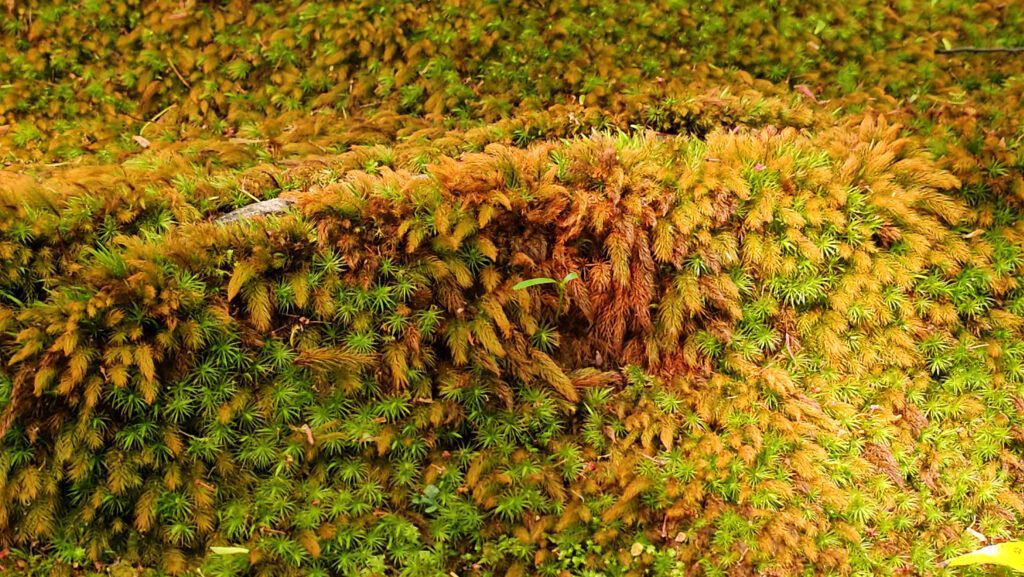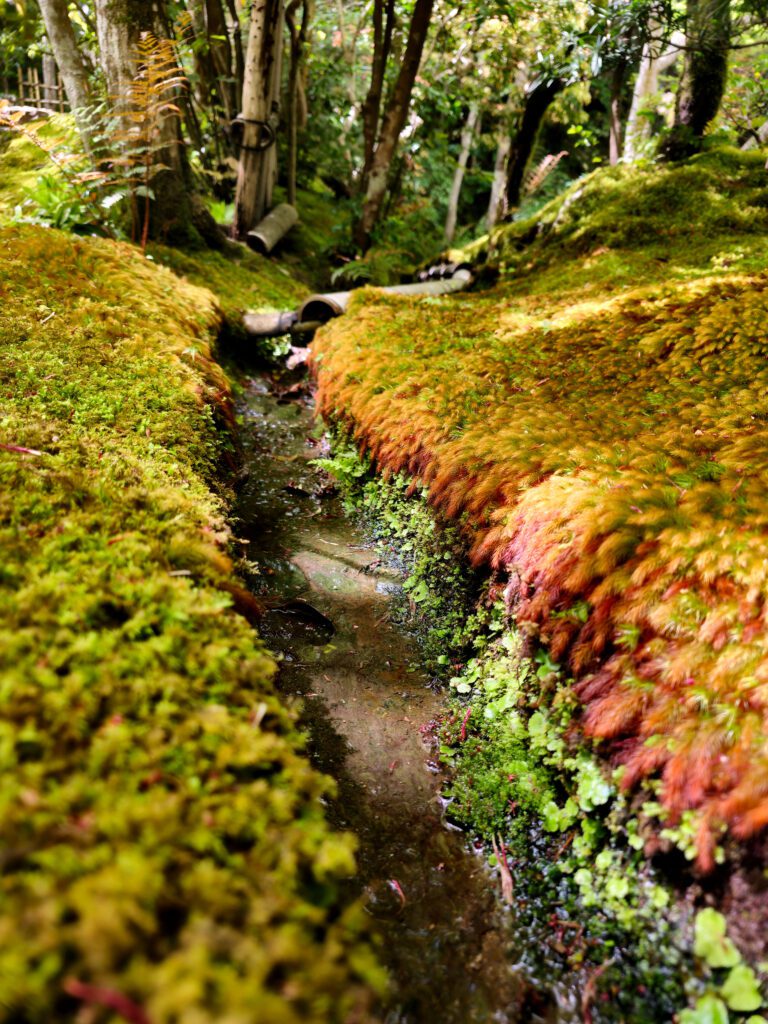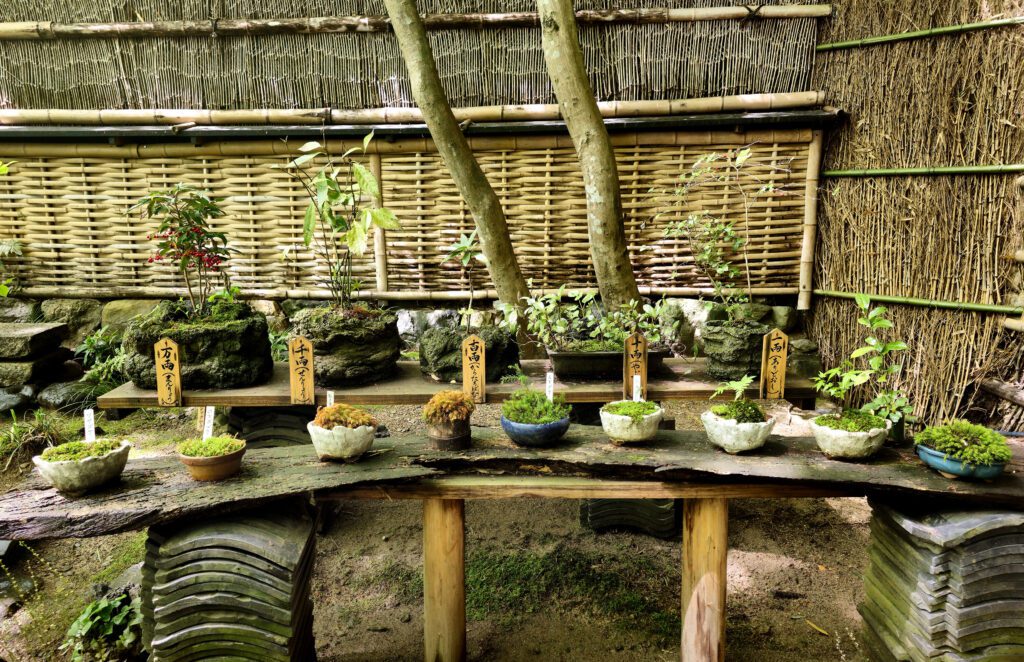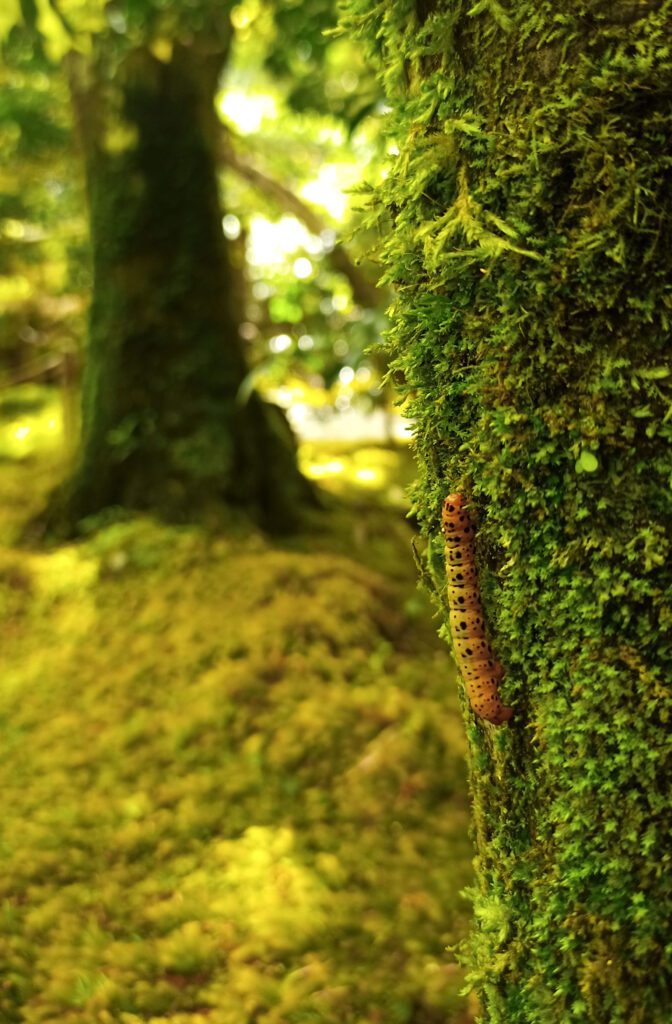Nestled amidst the lush greenery of Kyoto’s Arashiyama district, the Gioji temple is a tranquil haven that offers a unique blend of history, spirituality, and natural beauty. This lesser-known temple, often overlooked by tourists, is a hidden gem that deserves a spot on every traveller’s Kyoto itinerary.

The history of Gioji temple
The story of Gioji temple is as captivating as its serene surroundings. The temple’s origins can be traced back to the late 12th century. The temple is named after Gio, a beautiful dancer from the Heian period (794-1185) who fell in love with Taira no Kiyomori, a powerful military leader. However, when Kiyomori abandoned Gio for another woman, she retreated to this temple with her sister and another dancer, dedicating the rest of their lives to Buddhism.
The temple’s history is not just a tale of love and heartbreak, but also a testament to the resilience of these women. Their story is immortalized in the temple’s main hall, where statues of Gio, her sister, and the other dancer can be found.

Exploring the temple grounds
As visitors step into the temple grounds, they are greeted by a moss-covered landscape that exudes an ethereal charm. The temple’s garden, known as a “moss garden,” is one of the most distinctive features of Gioji. The vibrant green carpet of moss, punctuated by towering maple trees and dotted with delicate ferns, creates a tranquil setting that invites contemplation and relaxation.
The moss garden at Gioji is home to over 120 different types of moss, creating a rich palette of greens that range from the palest lime to the deepest emerald. This diversity of moss species contributes to the garden’s unique texture and depth, making it a sight to behold.
The main hall, or “hondo,” is a small thatched-roof building that blends seamlessly with the natural surroundings. Inside, visitors can pay their respects to the temple’s principal deity, Dainichi Nyorai, the Buddha of Cosmic Light and Wisdom.

Experiencing the seasons at Gioji temple
Each season brings a new dimension of beauty to Gioji temple. In spring, the temple grounds are adorned with cherry blossoms, creating a picturesque scene straight out of a Japanese painting. Summer deepens the green of the moss, offering a cool retreat from the city’s heat. Autumn transforms the temple into a riot of colors as the maple leaves change from green to vibrant shades of red and orange. Winter, while quieter, lends the temple a serene beauty, with the moss and trees dusted with snow.
Personally, we think the moss garden is particularly beautiful after a rain, when the moss appears brighter and more vibrant. It’s also a sight to behold in autumn, when the fiery colors of the maple leaves contrast with the cool green of the moss.

The art of moss gardening
Moss gardening is a traditional Japanese art form that requires patience, skill, and a deep understanding of nature. The gardeners at Gioji temple meticulously care for the moss, ensuring it receives the right amount of shade and moisture to thrive.
Moss is a resilient plant that can grow in challenging conditions, but it also requires delicate handling. It’s a slow-growing plant, and the lush carpet of moss you see at Gioji temple is the result of many years of careful cultivation and maintenance.

The role of moss in Japanese culture
Moss holds a special place in Japanese culture and aesthetics. It’s often associated with serenity, age, and natural beauty – qualities that are highly valued in Japanese art and philosophy.
In the context of Gioji temple, the moss garden adds to the temple’s tranquil and contemplative atmosphere. It invites visitors to slow down, to observe the subtle variations in color and texture, and to appreciate the beauty of nature in its most delicate form.

Visiting Gioji temple
Gioji temple is a place of tranquility and reflection, a perfect escape from the bustling city life. It’s a place where visitors can immerse themselves in nature, soak in the history, and perhaps find a sense of peace and calm.
The temple is open to visitors from 9:00 AM to 5:00 PM, and there is a small admission fee (300 yen). It’s recommended to visit during the quieter hours of the morning or late afternoon to fully appreciate the temple’s serene atmosphere.

The charm of Gioji temple
Gioji temple may not be as grand or as famous as some of Kyoto’s other temples, but its charm lies in its simplicity and tranquility. It’s a place where history, nature, and spirituality intertwine, offering a unique experience that leaves a lasting impression.
Walking through the moss garden of Gioji temple is a sensory experience. The softness of the moss underfoot, the fresh, earthy scent in the air, the play of light and shadow on the green carpet – all these elements combine to create a calming and meditative environment.
Whether you’re a history enthusiast, a nature lover, or a spiritual seeker, Gioji temple has something to offer. So, on your next trip to Kyoto, take a detour from the beaten path and discover the serene beauty of this hidden gem.

The moss garden at Gioji temple is more than just a feature of the temple grounds – it’s a symbol of the temple’s history, its connection with nature, and its commitment to preserving traditional Japanese gardening techniques. It’s a testament to the beauty that can be found in simplicity and the magic that lies in the smallest details. So, when you visit Gioji temple, take a moment to appreciate the moss – it’s a small but significant part of what makes this temple so special.
Having had the privilege to delve into the natural beauty of Gioji temple, it’s impossible not to be deeply moved by this unique sanctuary. The temple is a testament to the originality and uniqueness that characterizes Japan’s rich cultural heritage.
In our opinion, Gioji temple is definitely a must-visit destination for anyone seeking to experience the lesser-known gems of Japan’s cultural and natural heritage. It’s a place that we absolutely loved and would highly recommend to anyone seeking a unique and different experience in Japan.



